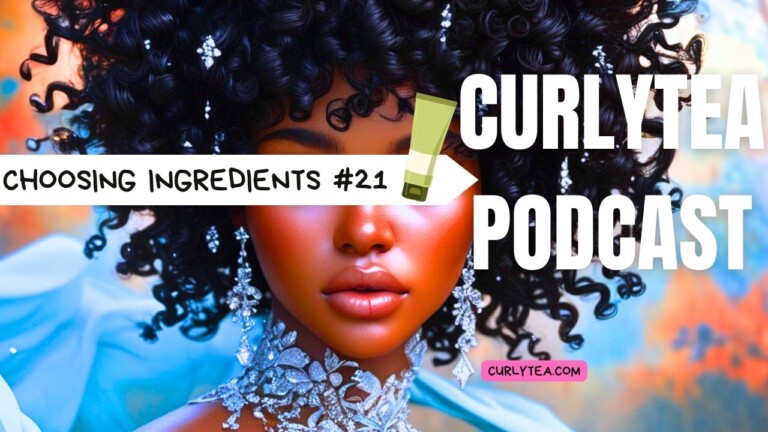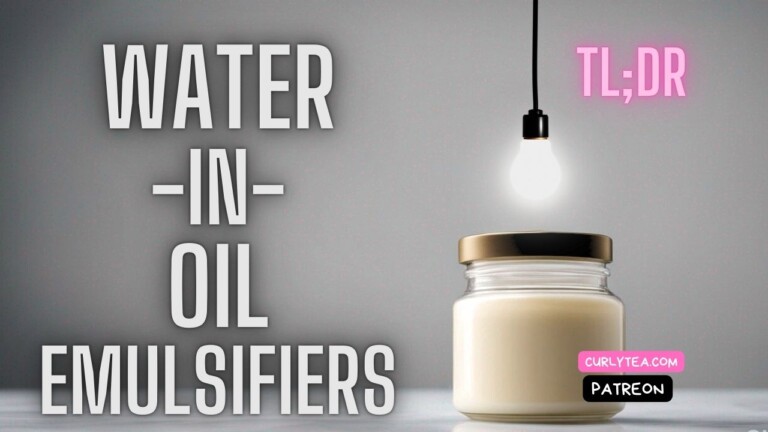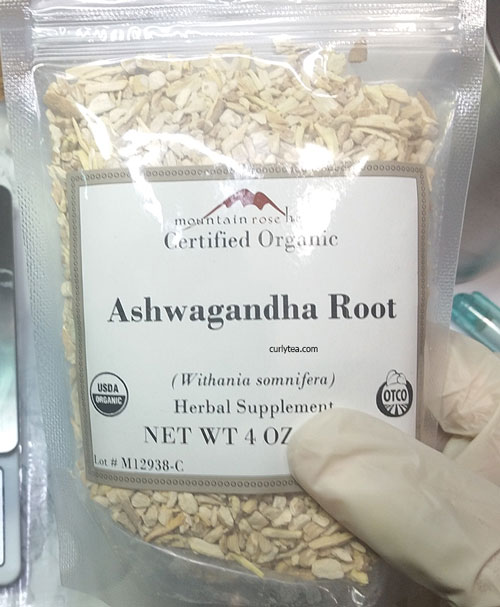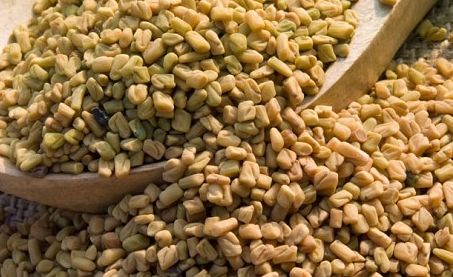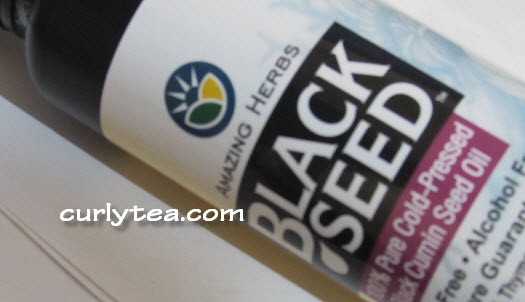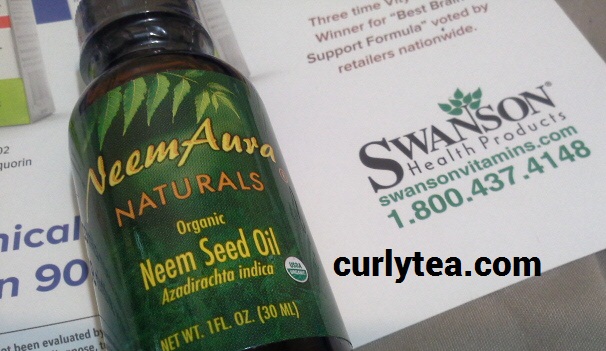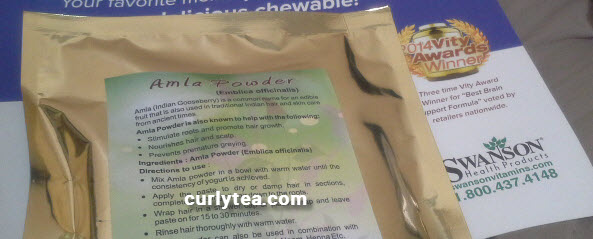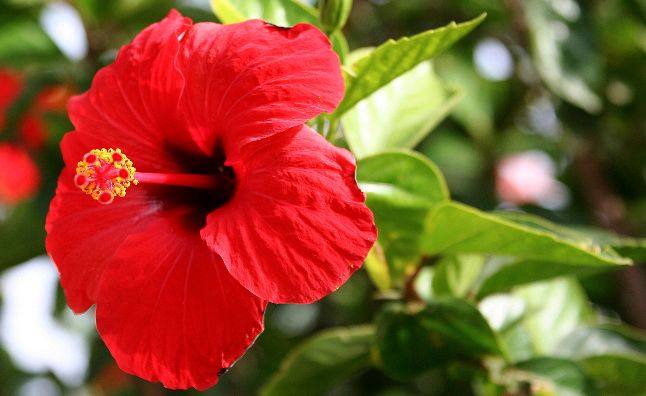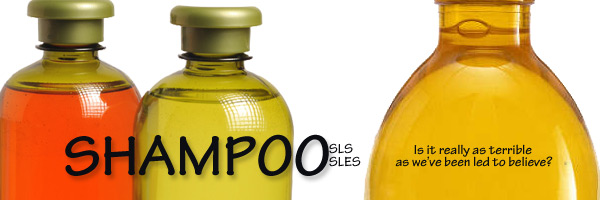
PART TWO
In part 1 of this feature, I talked about a great lecture from Steve Miller, the owner of the private label manufacturing company Gable’s Cosmetics Inc, concerning the latest boogie-man: Sodium Lauryl Sulfate.
His lecture also included details about private label manufacturing and how some of the most well-known companies get us to purchase their brands even though the ingredients may be quite similar.
Miller’s revelations were certainly eye-opening and made me think differently about EVERYTHING I see on a bottle of anything related to hair and skin care.
Miller revealed things like the fact some shampoos and body washes are interchangeable, and that true detergent gets rid of dirt/oils in the hair without the agitation required when you’re using real soap.
According to his information, it leads me to believe the ‘sulfate-free’ craze may be one hell of a marketing tool by a cynical industry trying to cash in on the next hot concept in hair care. Did I type that?! Oh yes, I did.
For a while, I didn’t use shampoos with Sodium Lauryl Sulfate (SLS) or Sodium Laureth Sulfate (SLES) anymore. I found many of them were too harsh on my hair.
However, I now question whether it was the SLS itself causing that problem, or whether it was the PERCENTAGE of SLS that was causing the problem.
In other words, its the amount of SLS I now question and not necessarily the SLS itself. If there’s 10% SLS in the shampoo, your hair may react with horror. But if there’s only 4% or 5% SLS, your hair may be fine.
Further, I’m suspicious that the other ingredients (like Cocamidopropyl betaine, etc) were causing that terrible, straw-like feeling I’d sometimes feel during a shampoo session.
The problems with these shampoos may be the combination of a high percentage of SLS mixed with Cocamidopropyl betaine, and Cocamide MEA,…. and Ammonium Lauryl Sulfate… and Sodium Lauroyl Sarcosinate… and Ammonium Xylenesulfonate… and PEG 120 Methyl Glucose Dioleate… and Disodium Laureth Sulfosuccinate… and Cocamphodiacetate… and LORD KNOWS WHAT ELSE!!
Maybe its the combination of all this mess that is causing the problem?
But shampoo is just the tip of the iceberg! Aside from other ingredients, the business of getting you to buy whatever it is they want to sell you is just as important.
Let’s continue with the nuggets of information revealed from Steve Miller’s lecture.
//How can they get you to buy the same stuff in a different bottle?//
Miller says his biggest expense in creating a product is not the detergents, the extracts or those vitamins.
Since most of the personal care products consists of basic ingredients, the things which make us buy a product most is:
(1) the smell
(2) the additives, whether or not those additives are added in percentages high enough to actually be effective.
Miller says his biggest expense is actually the fragrance and essential oils which are designed to get you to buy the product.
He talks about how his people (and other manufacturers) study women’s reactions to the smell of products; sometimes as those women are in the stores choosing which product to purchase.
And be honest, yall. Smell does matter. How many times have you bought a sickly sweet shampoo that makes you nauseous the moment you smell it? How many times have you purchase a leave-in conditioner that smells like rotting bananas? How many times have you bought a conditioner that smells like old fish? Probably ZERO.
Now think about all the stuff you’ve purchased because you loooooved the smell. If you’re being honest, you know some of that ish didn’t work like you were hoping, but you still used it because it smelled so good!
In addition to changing the smell, some companies make two brands of the same type of product in order to increase their sales. Chi and Biosilk, for example, are almost the same thing according to Miller. Both brands are made by the same company.
Sometimes companies do this because one brand’s name has fully claimed its share of the market and sales have gone flat. So they’ll come up with another name and put basically the same thing into a different package and put it on the market.
Miller talks about Chi and Biosilk: “The brand called Chi. Same product [as Biosilk], different perfume… Just changed the name, add it again to try to build up more sales.”
To Miller, there are some basic products which are the same. They just feel or smell differently. In his lecture, he uses an analogy of burger places to describe how companies create products.
Think about it. McDonald’s burgers tastes different than Wendy’s burgers. Wendy’s tastes different than Burger King. Burger King’s tastes different than Sonic’s. Etc, etc.
But hamburgers are all basically a bun+ beef + lettuce + a tomato (optional).
Each company adds their own secret sauce (nettle extract, burdock root, etc);
ketchup (jojoba oil, olive oil, etc);
pickles (vitamin E, B3, panthenol, etc);
mustard (silk amino acids, hydrolyzed keratin, etc);
and other little stuff to slightly differentiate it from its competitors.
But, in the case of shampoo, they’re all built on the same building blocks: bun (water) + beef (detergent) + lettuce (preservative) + tomato (foam booster).
And in the case of conditioners, its: bun (water) + beef (emulsifier/thickener) + lettuce (preservative) + tomato (dimethicone or oils)
Anything other than those basic ingredients are designed to entice you to buy it because you think its going to help improve the health of your hair, or make it grow, or seal split ends, or make it smell good, or whatever.
Of shampoos, Miller says, “For me, I see it as all identical. You mix one, you mix another, they all look alike to me.” Miller is speaking about most off-the-shelf shampoos which use detergents as their cleaning agent.
//Mineral oil is the enemy… right? //
Mineral oil (paraffin) is basically a distillation product of petroleum used as a lubricant and moisturizer. It’s colorless, odorless and is used quite heavy-handedly in the cosmetics industry.
Its in damn near everything… or it used to be in everything, before people got wise to it. The problem with mineral oil is not only that it comes from petroleum (oil), but it also coats the hair .
Some people say mineral oil locks out the hair’s ability to absorb moisture and coats the scalp. This effect can cause hair to become dry if a good SLS shampoo isn’t used to wash it off.
Mineral oil is used so much in hair and skin care products because its super cheap and better to incorporate into products than its goopy brother: petroleum jelly.
At Jane Carter’s site, Jane says that mineral oil is also used as a preservative and as a “coating for water-sensitive materials”. Well, the same way it coats that material is the same way it coats your scalp if you continue to use it without washing it off.
Carter’s website states: “If you continue to coat your hair and scalp with mineral oil based products you may experience excessive build-up that can lead to thinning hair since the hair shaft and scalp are not receiving the nutrients they need.” (13)
On the issue of mineral oil, Steve Miller says they use it because it prevents bacterial growth. What the cosmetics industry sees in mineral oil, though, is not only its inability to spread bacteria but also its inability to cause allergic reactions.
“You cannot grow bacteria in mineral oil. Vegetable oil, on the other hand — its cooking oil, “ he told the salon attendees of his lecture.
Miller says the disadvantage of using vegetable oils (olive, sunflower, avocado, etc) from a manufacturer’s standpoint is that “vegetable oil, just like salad dressing, has a propensity to turn rancid. Its a biological.”
He continues:
“Number 2: because its a biological, you may have an allergy — food allergy to it. So therefore using it on you as a practitioner or using it on a client, you have to be very careful what vegetable oil you’re using.
Mineral oil is inert. Nobody’s ever allergic to it. Can’t be allergic to it. Its non-biological. Bacteria can’t grow in it. “
I understand why manufacturers may want to use mineral oil, but I’m not going to use it if I can help it. Veggie based oils like Olive, Sunflower, Sesame, Macadamia, etc. bring with them all kinds of added benefits. And they don’t necessarily obstruct the hair’s ability to absorb moisture.
Miller says he sells a ton of mineral oil to massage businesses, particularly in Korea Town. Remember, its doesn’t turn rancid and spread bacteria.
“The reason is there’s no tactile, uh, contact of transferring bacteria from a client to the massage person and back and forth,” Miller says.
He also concedes the fact that “people hate mineral oil” even though he says he doesn’t know why.
Miller:
“Somebody wrote something bad about [mineral oil] and so everybody fights it. But it works. Every medication that you see on the market like Neosporin is made out of mineral oil, petrolatum product. All acne medicines: mineral oil, petrolatum products. You have lipstick — you guys will swallow… it’s mineral oil.”
In the past couple of years, some big name brands are bowing to the pressure of consumers and improving the quality of their ingredients, preferring instead to use a mix of beeswax, castor oil and other vegetable-based oils and waxes.
I’ve seen some sources which say mineral oil is slowly absorbed by the skin, while others say mineral oil isn’t absorbed and only acts as a barrier oil.
Some sources even claim because the mineral oil molecules are too large, it is extremely difficult for it to penetrate the skin. Others swear that it can build up in your body after being absorbed. What’s the truth? I don’t know, chi’le!
// Puffin’ yo head up… but not in a good way //
Miller spoke about the phenomenon known as “cosmetic puffery”.
According to Chemistcorner.com, “puffery” — also known as “key ingredients” or “stuff that sounds good” — is meant to “sound impressive”, provide a compelling story, and to promote a trend.
You all know what this is. Its when you pick up a product and see something like “with Argan Oil” on the bottle, but you turn it over only to see Argan oil listed near the bottom of the ingredients list.
Or when you see ‘Vitamin E and Jojoba’ slapped on the front of the bottle but you don’t notice anything special about that product even though you KNOW good-nin’ well that 100% Vitamin E is incredible for skin and hair.
I think in most store bought products (and in a few of the online brands) whatever extract or exotic oil it contains, it may not be present in a high enough concentration to really be effective.
This may be because some of the ingredients are so expensive that if the company actually use enough of it to make it effective, the price they would have to charge you would be too ridiculous.
Does 1/2 a squirt of Nettle oil extract really cause your hair to shine? Does a teaspoon of hydrolyzed keratin really improve the health of your hair? These things have to be used at a certain percentage in order to work.
On the flip-side, taking a positive view, some ingredients can be effective even at lower percentages.
I would venture to say that additives like Vitamin E, and oils like Tamanu oil are effective at lower percentages. It takes very little Vitamin E MT50 to increase the shelf-life of any oil. And with the sickly sweet smell of Tamanu, a little goes a long way and it’s actually pretty good from my anecdotal experimentation.
Perry at Chemistcorner.com says:
“Basically, these ingredients are added to help convince consumers that their beauty product is special and will provide miraculous results.
…
If you create a brilliant formula that no one ever purchases, you’ve failed. Puffery ingredients entice people to buy products.”
Ouch.
Perry goes on to state these puffery claims normally fall under a few categories: Vitamins, Proteins, Natural ingredients (botanicals), and High tech ingredients
What gets our money is the ‘juices and berries’ we love so much! We gravitate towards products which advertise to have special ingredients like Aloe Vera. Or Horsetail. Or Burdock Root. Or Keratin. Or Argan oil. Or whateva.
And that’s what Miller, at Gable’s Cosmetics, means when he says this:
“I got Jojoba. I got Aloe Vera. I got vitamins. I’ve got every botanical that you think under the sun. Everybody has a good idea about what botanical they think is the best. Everybody’s heard of ’em and everybody’s been sold on ’em. And everybody’s been recommended by the friend, or a neighbor or another girlfriend who says ‘oh if it doesn’t have Vitamin E, it isn’t going to be good.’ Or cocoa butter. Or shea butter… “
And the next thing he said made a whole lot of sense, but it kinda floored me because I never thought about it in this manner. This was touched upon in Part 1 of this feature.
Miller says, specifically on the issue of shampoo, all those great botanical ingredients may not mean anything! Why? Because of the cleaning agent in it.
Miller:
“Does [the additive in shampoo] do anything to the hair? Actually it doesn’t because if the detergent is doing its job — once you add the water, start the agitation on the hair — Mr. Detergent here *holds up shampoo detergent* thinks the Vitamin E is just another piece of scum on your hair and washes it back out. It don’t (sic) know the difference. Welcome to Mr. Cleaner. That’s all it does.”
I know. I know. You may or may not agree. You may or may not have even thought about it, but it makes a hell of a lot of sense. It explains the straw-like, frizzy ridiculousness I used to experience when using SLS shampoo supposedly with all those shi shi frou frou botanicals.
In my own experiences, Nature’s Gate Aloe Vera Shampoo was notorious for this from back in the day. It has all these great botanical ingredients, but it was stripping enough for me to wash dishes with it. No lie.
As I said in Part 1, shampoos, particularly sulfate shampoos, are simply meant to clean. Period. Sulfate (sulphate) found in your toothpaste and body wash are simply meant to clean. Period.
Your scalp sometimes feels squeaky clean with these shampoos just like your teeth sometimes feel squeaky clean after using store-bought toothpastes.
So, in this chunk of Miller’s talk, I took away 3 major points.
One, that the public tends to run away from things which are working like they were meant to work… and possibly for the wrong reasons. Some ingredients (like sulfates) may be trapped in quicksand due to the combination of usage rates which are too high, plus bad publicity, and the cosmetics industry’s need to make more money using new buzzwords (like ‘sulfate-free’).
Second, things like mineral oil — while being derived from the oil industry — were added for very specific reasons. Although I’ve long since given up using mineral oil on my hair, the cosmetics manufacturers didn’t include it in their formulas just for profit… although that was probably the MAIN reason.
Regular mineral oil is biologically inert. It doesn’t turn rancid, doesn’t hold/generate bacteria, yeast, or mold, has little to no smell, has no active compounds, and is an easy product to use for massages which require a large amount of oil on a regular basis.
Third, while we can get all hyped up about extracts and botanicals, it’s possible that they’ve been added into a store-bought product at a very low percentage, essentially making it’s addition almost meaningless to your hair. And the addition of those extracts could have been hyped up simply to entice us all into buying the product.
I mean… don’t tell me “Super Product X with Argan oil”, then I flip it over and Argan oil is last or next to last in the ingredient’s list. I hate that.
So, my eyes are continuing to be open when it comes to this cosmetics industry. I hope you too will have a better understanding of what’s going on instead of continually relying on Madison Avenue marketing folk (who’re trying to get your money) for information.
And you KNOW there will be a Part 3 in the future.
Related:
1 https://www.gabels.com/frames.html
2 https://www.amazon.com/Aveeno-Naturals-Foaming-10-Ounce-Bottles/dp/B001E96LD6
3 https://www.ulta.com/ulta/browse/productDetail.jsp?productId=VP11171
4 https://www.colgate.com/app/Softsoap/US/EN/Ingredients.cvsp
5 https://chemistscorner.com/ingredients-cosmetic-companies-add-as-puffery-and-why/
13 https://www.janecartersolution.com/haircareguru/?p=3221
 CURLYTEA
CURLYTEA
